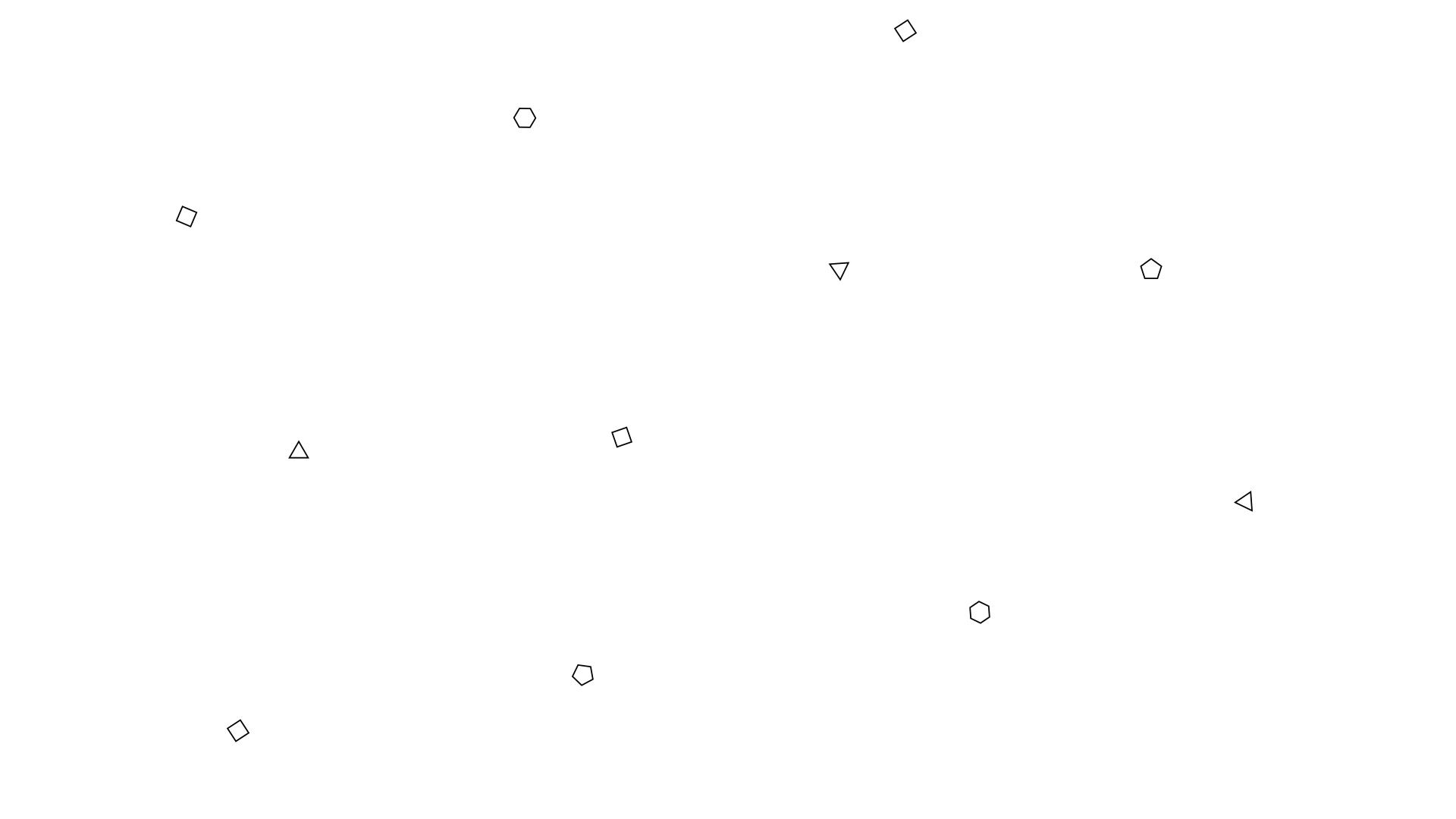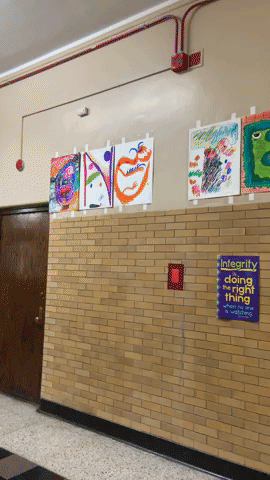
SELF-CREATED UNIT PLANS WITH LESSON PLANS & TEACHING MATERIALS
This includes one unit plan from my high school and elementary school student teaching placements.
STANDARD 2 - Content Area and Pedagogical Knowledge - The competent teacher has in-depth understanding of content area knowledge that includes central concepts, methods of inquiry, structures of disciplines, and content area literacy. The teacher creates meaningful learning experiences for each student based upon interactions among content area and pedagogical knowledge, and evidence-based practice.
STANDARD 5 - Instructional Delivery - The competent teacher differentiates instruction by using a variety of strategies that support critical and creative thinking, problem-solving, and continuous growth and learning. The teacher understands that the classroom is a dynamic environment requiring ongoing modification of instruction to enhance learning for each student.
DESCRIPTION:
For my high school unit plan, students created character letters. As a class, we voted on a word/phrase that they felt would be impactful and that students needed to hear. Once, decided on the phrase each student got a letter and created a unique font for their letter, and decorated it to embody their character. We focused on emotions and emphasis when drawing the characters. Students when complete got to install their letters to spell out the selected phrase.
DESCRIPTION:
For elementary, I was at Gary Elementary and taught 3-7. One of the more successful lessons I had was the Calaveras (sugar skull) masks with 7th grade. Students learned more (and many celebrate) Dia De Los Muertos and created plaster skull masks that they adorned with their unique details.
I also included a lesson I did with both 3rd and 4th. Students made clay monster pots. Before starting, students learned more about animators and we looked at PIXAR's sketches of movies like Monsters Inc and Luca to give students ideas for monster features they added to their pots.
RATIONALE:
With the demographics of Raby in mind, and that I was jumping into a graffiti unit I thought this was a great project for my high schoolers. It scaffolded off the previous lesson (inspirational posters) while getting them to build new skills (such as working bigger, thinking of social justice, and collaboratively creating a project), and incorporated social and emotional learning and culturally relevant teaching strategies. Overall, I think this lesson was successful. Students created beautiful pieces of art and really developed solid definitions for social justice and how art can be used as a tool to create social change. This is a lesson I will keep in my toolbox and teach again without a doubt.
EVIDENCE:
Below are some images of the final student works as well as the level 5 unit plan.


RATIONALE:
With 7th grade, I thought of the demographics of the school, and with such a large Mexican population and quite a few of my students celebrate Dia De Los Muertos. With the holiday falling in line with the end of the quarter, I thought it would be a great project to finish out the quarter and make some more meaningful pieces to them considering it is a holiday many of them are aware of and celebrate.
For 3rd and 4th grade, I wanted to have them use clay and this was a new medium for them! Thinking that these students have not been in school for pretty much two years making monsters was a cool intro clay project to teach them some techniques and create some unique results instead of just doing pinch pots or something. They really let their imagination take over and they turned out to be really exciting monsters!
EVIDENCE:
Below are some images of the final student work as well as the lesson plans for the monster pots and the calaveras.


ASSESSMENT METHODS PORTFOLIO
This includes one formative and summative of assessment from my high school and elementary school student teaching placements.
STANDARD 7 - Assessment - The competent teacher understands and uses appropriate formative and summative assessments for determining student needs, monitoring student progress, measuring student growth, and evaluating student outcomes. The teacher makes decisions driven by data about curricular and instructional effectiveness and adjusts practices to meet the needs of each student.
DESCRIPTION:
Formative: As a part of the character unit plan, students completed a pre/post-test. This was based on their understanding of social change, how it is a tool artists use, what an audience is, and how emotion is important in art.
Summative: For the inspirational posters, students graded themselves. This was based on the rubric and task menu that they were aware of. They graded themselves with the self-assessment google form.
RATIONALE:
Formative: This pre/post-test was a great way to gauge where students were at. Seeing results from pre to post-test was fantastic and also marked student growth. These topics were brought up throughout the project and students actually grew in their knowledge. This not only was a clear way to see student growth but it was also a great way to inform my teaching. The pre-test was given before the unit started and allowed me to see what students knew, what needed to be taught, and how to change my lessons to appropriately teach the objectives to my students.
Summative: Students graded themselves on this project to add some accountability to their project. Motivation levels at this school are incredibly low and students had to have directions repeated to them constantly. This inspirational poster was their first project and it was a great way to ensure they graded themselves, helped make them aware of the objectives/project requirements, and in turn, increased some class engagement for future projects.
EVIDENCE:
Formative:
Summative:


PROFESSIONALISM, ADVOCACY & LEADERSHIP: PAL 1
STANDARD 9 - Professionalism, Leadership, and Advocacy - The competent teacher is an ethical and reflective practitioner who exhibits professionalism, provides leadership in the learning community; and advocates for students, parents or guardians, and the profession.
DESCRIPTION:
Over the summer of 2021, I traveled with my family to Seattle. While there, I wanted to be sure to stop at the Chulily Museum of Glass. It was unlike anything I had ever seen before, the glass installations were absolutely breathtaking.
RATIONALE:
This was important and helpful to add to my art experience. I have minimal glassblowing knowledge- only gained from friends who took glass and binging the Netflix show blown away. This museum allowed me to really soak up and grow in admiration for the material and delicaticy that art is. It was wonderful to gain a new artist to keep in mind for lesson, and build ideas for lessons. While none of my students would be blowing glass there is opportunity for inspiration from the artwork I got to see. Going to museums is such an enriching and immersive way to gain art knowledge. Seeing glass installations was new to me and something that will impact me in my field moving forward. While I don't plan to teach in Seattle or even Washington, I think the art museum experience is something to consider moving forward in my teaching/artistic career. Remote learning even showed the vast museum resources that are virtually accessible!
EVIDENCE:
Below are some beautiful images of the art and me with the pieces at the Chulily museum of glass.



DESCRIPTION:
Formative: For elementary, I found that the best way to give some formative assessments was by going and circling the room and giving feedback to students on their work in progress so they can fix any mistakes before they get their final grade.
Summative: Students were graded based on the rubrics for each project.
RATIONALE:
Formative: The formative assessment that I gave was verbal one-on-one feedback. My CT said it has worked well for her and it really has! Students are typically pretty receptive to their feedback. On top of this, showing great student examples (without saying who did the work) in progress before having students work was a good guideline and motivator for students to stay on track.
Summative: Depending on the grade, students were graded on a scale from 10- 20. The rubric would be graded based on craftsmanship as well as different factors depending on the project at hand. The rubrics were always written on the whiteboard and announced so that students are aware of what they are being graded on and how many points are in a given category. The work will be turned in with the rubric and their score (and a sticker if they get perfect points) on the back/bottom.
EVIDENCE:
Included is a PDF of my week 3 rubrics for each project the students were doing at the time. They are color-coded to match the grade level and would have the number written out and the total circled.
PROFESSIONALISM, ADVOCACY & LEADERSHIP: PAL 2
STANDARD 9 - Professionalism, Leadership, and Advocacy - The competent teacher is an ethical and reflective practitioner who exhibits professionalism, provides leadership in the learning community; and advocates for students, parents or guardians, and the profession.
DESCRIPTION:
October 14th of 2021, I got the opportunity to be showcased in Shirely Ryan's Art in Motion art show. This is a reoccurring art show that I have had the honor to participate in for the past few years. Funds are split 50/50 between the artist and the hospitals' art therapy program.
RATIONALE:
This year I was unable to attend in person because it was rescheduled to a Thursday night and I had to be at school the next day.(Due to the mass amounts of high risk patients, artists, and potentially buyers it was safe to have this in person but there were still many virtual aspects). I got to be apart of an online bidding process and had a breakout room to discuss my artwork with people. Which turned out to be wonderful virtually- and this year was a bit smoother as they worked out the kinks after having last year's show being completely virtual. I displayed a total of 10 pieces of work heavily inspired by my time in the hospital and rehab. Artmaking is very powerful for me to feel control and a way to move my body. These pieces tap into growth and emotion that has impacted my personal work since being released from the hospital. While I feel that my work is evolving always, this show is a wonderful way for me to tap into those emotions, feelings, and experiences that have shaped my life and really speak to how powerful art can be. Each year, this show offers me a place to display and talk about myself as an artist- which I did not think I would be at this point! Art shows have been a great experience for me to find the teacher/artist balance within myself. To be able to have my work displayed next to other talented and resilent artists is an incredible experience I can never pass up.
EVIDENCE:
This was my page in the artist brochure from 2021, this includes all but one of my pieces featured in the show.


